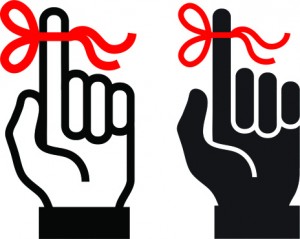Memory and Promise (Part 5)
By Asher Crispe: July 11, 2012: Category Decoding the Tradition, Inspirations
Rabbi Joseph Gikatilla’s Sha’are Orah
Memories and Promises
—The memory of the TZaDIK [righteous one] is for blessing. (Proverbs 10:7) (37)
—And I will remember my BRIT [covenant]. (Exodus 6:5) (38)
 Gikatilla has no trouble shepherding his proof-texts off to market. He also has the rare ability to work with elaborate knots. One senses that he can both tie and untie them—the latter being the far more difficult task. The coats of each of his flock are shed to be woven and knotted together ultimately serving up a tapestry of intricate design. Techniques such as these enable him to anticipate many fine insights from later strata of kabbalistic exegesis.
Gikatilla has no trouble shepherding his proof-texts off to market. He also has the rare ability to work with elaborate knots. One senses that he can both tie and untie them—the latter being the far more difficult task. The coats of each of his flock are shed to be woven and knotted together ultimately serving up a tapestry of intricate design. Techniques such as these enable him to anticipate many fine insights from later strata of kabbalistic exegesis.
Our thought thread at present entails the righteous individual, the TZaDIK, whose creative potential, particularly with language, flows forth as a reservoir of blessing. This is the pact [BRIT] that was made. And now the concept of time itself will chime in, acting first the part of memory:
Know that this attribute is also known as ZiCHaRoN (memory). In this place all the creatures of the world’s deeds are remembered for good and for betterment. And according to [the flow] of memory that comes from this place, judgement is passed on all the world’s creatures. Thus, the New Year, Rosh Hashanah, is known as the day of ZiCHaRoN. The essential significance of which is: Rosh Hashanah [literally the New Year] is the essence of ADoNaY. Yom HaZiCHaRoN [a day of memory] is the essence of the attribute EL CHaY, because we stand on Rosh Hashanah in judgment and all our deeds come to be accounted for and come to the ZiCHaRoN (memory) before ADoNaY. This is the essence of prayer [said on Rosh Hashanah], “Remember (ZaCHReynu) us for life (CHaYYim), EL, the King who desires life, inscribe us in the book of life…EL CHaY and defender.” This attribute [ZiCHaRoN] remembers all that has been forgotten and that is why we seal our prayer on Rosh Hashanah with “ZoCHeR HaBRIT”( Rememberer of the covenant), for this attribute contains the essence of ZiCHaRoN as well as the essence of BRIT and that is why we close [our prayers] with these two concepts, ZoCHeR ha BRIT, because it is the essence of ZiChaRoN and BRIT. (39)
The lacing of memory, circumcision and foundations may seem like a haphazard bunch or comparisons that spiraled out of control. However, on the contrary, this latest link is demonstrably significant. Consider for example, Elliot Wolfson’s phenomenological reworking of these relationships:
Circumcision is the cut that opens the flesh of the spirit to the reminiscence of a primordial bond, a kind of memorial thinking, which involves concentration on the point in which consciousness in its entirety is ground (emphasis mine—quality of YeSoD), a return, that is, to one’s origin. In a word, circumcision is a rite de retour, a retrieval of the beginning that stands not in the past but unfolds always in the future, the breaking open of the path that engenders memory across the divide of time. (40)
Time literarily leaves its mark. One’s creative channels are etched with the trace of origins. All self-actualization is an actualization of self—a re-production. The ability to re-produce serves as the ground wherein one stands with one’s feet resting on one’s own shoulders. Self-expression disseminates the codex of self which, caught up in the interval of time, re-establishes itself again and again in the resurgence of genetic re-pro-gramming of memory. (41) Wolfson observes that this association spreads out across a much larger corpus of literature wherein:
In medieval kabbalistic sources, we find an elaborate application of the correlation of circumcision and memory in an altogether distinctive tone. The special relationship that pertains between the two is suggested by the symbolic identification of the membrum virile as the seat of memory. This connection is based in kabbalistic texts, beginning already in Sefer ha-Bahir, on a word play between zakhor, “to remember,” and zakhar, “masculine.” (42)
 One generation to the next, the masculine insemination begins to define what was passed along and what will continue. What we have are signs of memory and memory of signs (to turn the expression in the style of so many of Wolfson’s formulations). In the absence of this, we would be doomed to live without building, having no basis to support one level to the next. Always already starting over, but without a meaningful place to start, we would be broken up, having no continuity with our-selves.To rectify this, we are con-signed to memory as foundation and foundation as memory to live our lives with high fidelity.
One generation to the next, the masculine insemination begins to define what was passed along and what will continue. What we have are signs of memory and memory of signs (to turn the expression in the style of so many of Wolfson’s formulations). In the absence of this, we would be doomed to live without building, having no basis to support one level to the next. Always already starting over, but without a meaningful place to start, we would be broken up, having no continuity with our-selves.To rectify this, we are con-signed to memory as foundation and foundation as memory to live our lives with high fidelity.
Memory, as Wolfson alludes, is not merely retroactive—a transporter to the past—but rather offers to forge the connectivity of time itself. As the embryo of temporal unity, memory blossoms into its twin who, not withstanding the undeniable similarities, processes highly unique characteristics of its own. This twin is known as promise, who, teamed with memory completes the temporal structure of foundations.
Reenter Wolfson: “According to kabbalistic interpretation, the (un) seeing of the phallic sign is the fulfillment of the prophetic promise of the vision of the ancient glory in the end of days.” (43) Yet, this promise is born out of a more primal relation with the specific kind of memory commissioned here—one that circulates in Wolfson’s perception as:
The remembrance spoken of here obviously is not the common everyday memory of isolated experiences that are time-bound, the capacity to retain images in the present of that which is past to help one anticipate events of the future, but it is rather a recollection that transcends the linearity of time by gathering together past, present, and future in the circular resumption of what has never been, a calling to mind that allows one “to see old things with a newer, farther look.” (44)
The “newer, farther look” at the close of this quote signifies the promise of something better born out of the recollection of time as memory. Have we gotten to the point to declaring “memory as promise and promise as memory?” (45) Moreover, as Düttmann contends: “Memory: always a promise of something to come. Promise: always a memory of something that has happened, has come to pass. And between the two, between memory and promise, man who names.” (46)
37 Quoted in Gates of Light. P.60
38 Ibid. p.82.
39 Ibid. pp.67-68.
40 Wolfson “The Cut that Bindings: Time, Memory, and the Ascetic Impulse (Reflections on Bratslav Hasidism)” in God’s Voice from the Void. P.104.
41 Of particular interest is David Michael Levin’s The Body’s Recollection of Being which could serve as yet another text to cultivate these ideas from. Of the many beautiful passages, one of paramount importance deserves citation (even though the analysis could run the length of a companion paper):
Circumcision is a tremendous encounter with the Lawful Word, [my note: Gikatilla identifies all of these terms with the word CHoK (p.91-95 Gates of Light) meaning law. the commandments of God that are meant to seal the entrustment of virtue into man’s memorial body. In sealing the covenant, God pro-grammed our bodies. (This insight persists, oddly enough, in our scientific thinking about the genetic ‘code’.) But this pro-gramme is originally, as the word informs us, just a potential. In linguistic theory, it would probably be called our ‘competence’: a very special one, however, since the text is woven, invisibly, into the very texture of our flesh. It is, as it were, the secret,[note: Kabbalists sometime break the word YeSoD up into YUD-SoD—the YUD resembling a seed and SoD referring to a secret.] hidden scripture: that scroll of interior light by reference to which our life (or, as linguistic science would say, our ‘performance’) may always be properly guided. The pro-gramme is, therefore, a truly unshakable standard or norm, a secret code of behavior, inscribed for safe-keeping into the very flesh of our bodies. However, the circumcision only breaks open a passageway: what happens thereafter is up to us. The programme, after all, is not a ‘real’ seal; it is only the ideal promise of one. P.203-204.
42 Ibid. p.105.
43 Ibid. p.106.
44 Ibid. p.104.
45 See The Gift of Language p.81 which relies on this formulation.
46 Ibid. p.82.
http://www.interinclusion.org/inspirations/memory-and-promise-part-6/





















;)
;)
;)
;)
;)
;)
;)
;)
;)
;)
